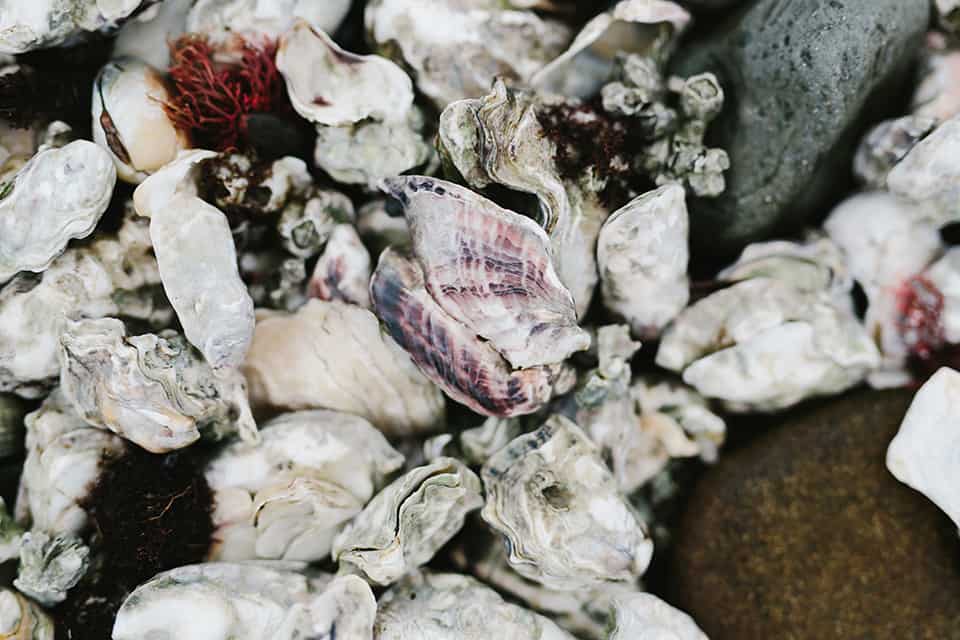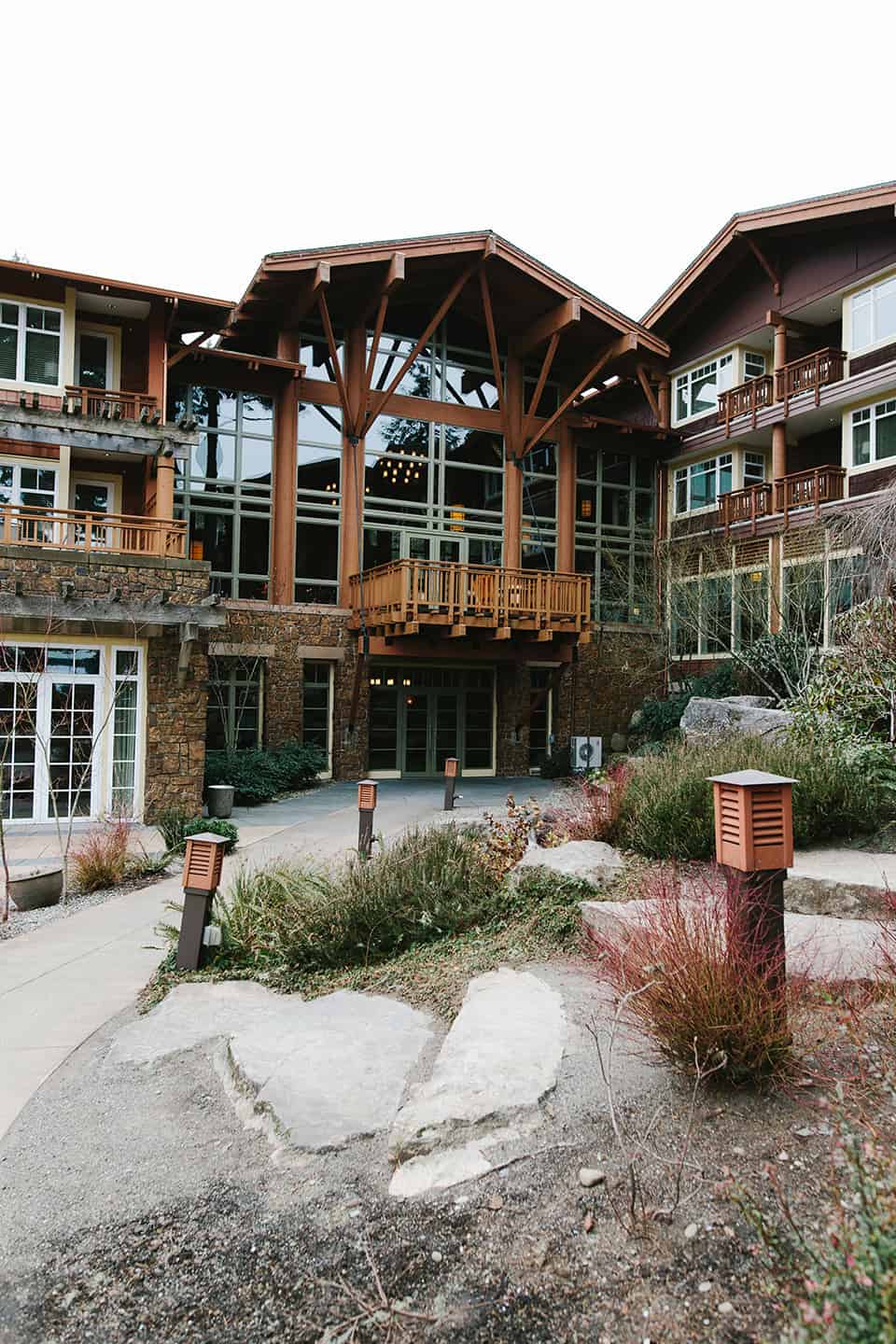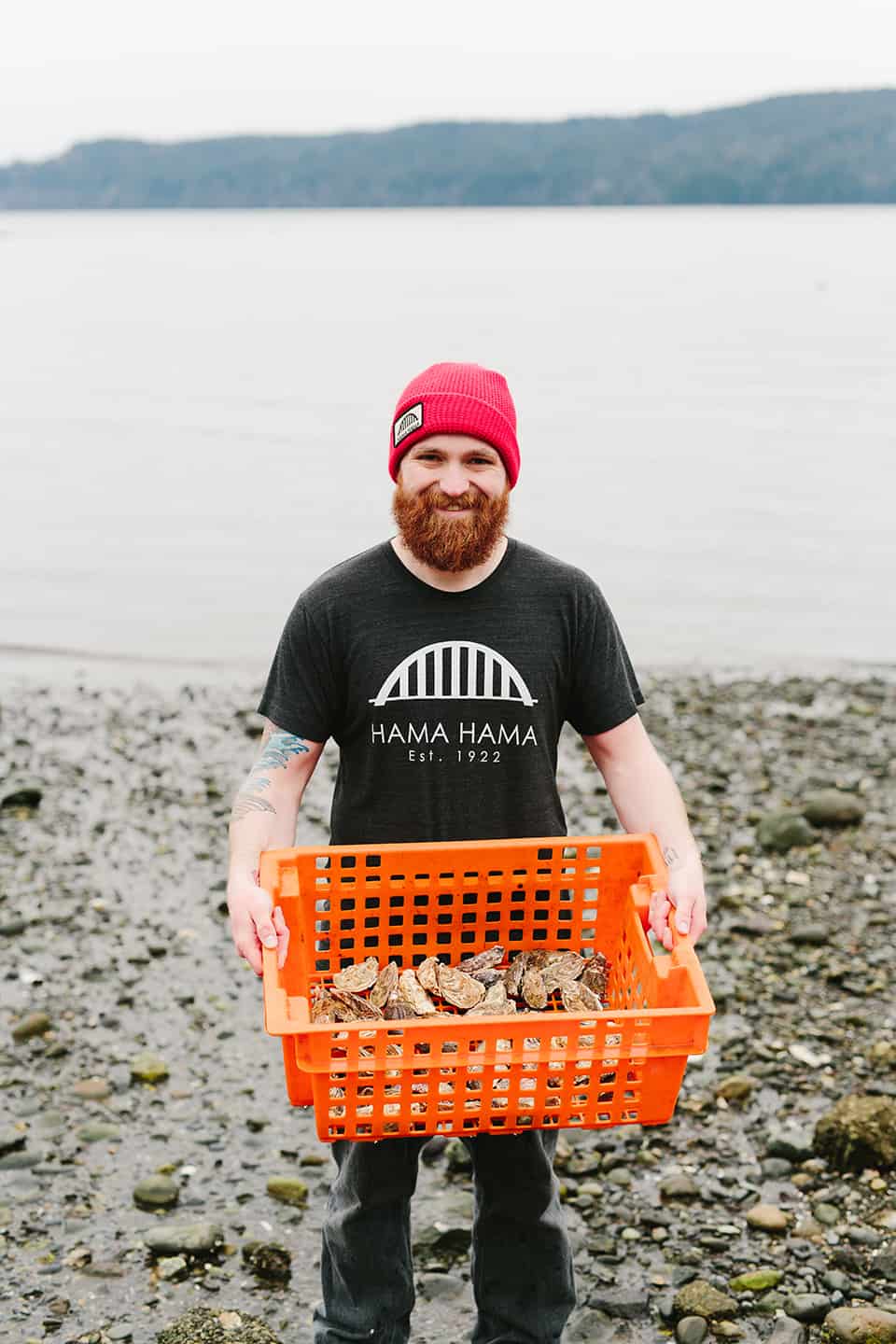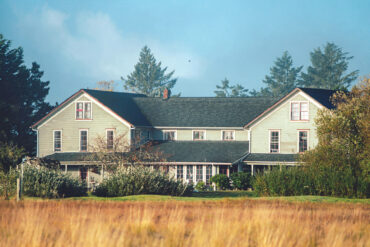A cracking, slurping, delicious good time
written by Corinne Whiting | photos by Cameron Zegers
If you don’t fully appreciate oysters before landing in Washington, chances are you’ll truly understand the shuck-happy clamor before you sail away.
In these water-logged parts, fifth-generation family-run shellfish farm Hama Hama has built a reputation anchored in hard work and clean water. Its mission is simple—“Utilize low-impact farming methods to grow world-class oysters, have fun and leave something good for the next guy.”
Located on the Olympic Peninsula, Hama Hama beds sit at the mouth of one of Washington’s shortest, coldest and least developed rivers. This purity produces oysters with a clean, crisp flavor. These oysters are not fed, fertilized or doctored. As they grow, the bivalves actively clean their environment. Two oyster varieties grow on Hama Hama’s home farm—classic, beach-grown Hama Hamas and tumble-farmed Blue Pools.

On the beach, staff harvest at low tide and bring product to shore at high tide. “One awesome thing about being in this industry is that your schedule isn’t determined by the board of directors. It’s determined by planetary forces,” Hama Hama’s Lissa James Monberg said. Sometimes you “have to wait for the moon to pull the ocean off your beach.”
Monberg said this marine lifestyle helps tap into a better way of interacting with the world. “Even though it puts you right in the heart of big issues like pollution, runoff issues … it seems like a really positive place to work,” she said.

FARM FRESH
Hama Hama officially launched its “Direct to Chef Program” in 2012 to “put the best oysters and clams into the most skilled hands.” Perks such as overnight delivery and immediate feedback benefit everyone involved. “Selling to people who share our stoke for bivalves fuels our fire and keeps us smiling when we’re picking and packing late into the wee hours of a mid-winter low tide,” Monberg said.
James Beard Award-winning chef Renee Erickson said she was lucky to meet Hama Hama six years ago before opening her acclaimed restaurant, Walrus. “We take our staff many times a year to see the farm, visit, learn and generally eat and have a fantastic time,” she said.
TABLE READY
Although Hood Canal’s picturesque Alderbrook Resort & Spa harvests oysters on its own beach, the resort will often source from their Hama Hama neighbors, too. Alderbrook’s dishes incorporate seasonal ingredients foraged from the 88-acre property, and recent dishes included oyster shooters with Heritage ghost chili vodka and cucumber-lemon-basil relish, plus oyster stew with shallots, brown butter, sherry cream and paprika oil.
In Olympia, Our Table exclusively serves Hama Hama shellfish, one of its favorite preparations being baked oysters. The dish uses extra-small shell oysters baked with housemade bacon jam, smoked pepper coulis and a spicy arugula pesto or mustard greens and house seasonal fruit vinegar.
When the weather cools, Erickson brings one of her favorite creations to Seattle’s Bar Melusine—the oyster pan roast. She serves the oysters barely cooked, with a rich sauce of bacon, butter, five spices, cognac and a touch of cream.
Seattleites can also find Hama Hama at neighborhood farmers markets—Saturdays in the University District and Sundays in Ballard. Of course, there’s no better place to savor farm-fresh products than at Hama Hama’s Lilliwaup store and oyster saloon—the friendly site where all the magic happens.








